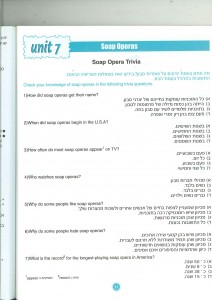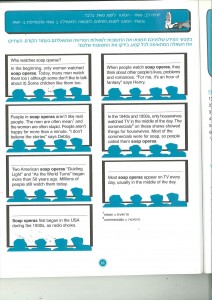Sharon Hartle,in her post “Is it an Error not to Correct” has once again brought up issues that are very relevant to my daily life in the classroom. My focus is mainly on errors in written work.

Hartle says: “Once they (errors) are robbed of their explosive emotional charge, we can start to look at why they occur”.
I couldn’t agree more. Learning from errors mainly happens when students don’t see their errors as a threat, as something that must be ignored or simply made to disappear (by making a bee-line to the nearest trash can!).
I have found that giving students an opportunity to correct their mistakes and then either resubmit their task or get extra points, has had a huge positive impact, both on my adult and high-school students. While not everyone takes advantage of this (I have NEVER found something to work for EVERYONE), I’ve seen a significant rise in the number of students who actually read my comments and correct their mistakes.
However, like everything in life, it has a price. Mainly for me. This topic is so close to my heart because I’m still looking for ways to reap the benefits without working as hard.
I do as Hartle suggested, I don’t try to correct all mistakes, nor have the students correct them all. With the adult students that works better, especially since I began using EDMODO. Edmodo let me easily keep track of who was handing in things a second time and I wasn’t flooded with papers. Since I could see my previous comments, and I didn’t mark all errors, reading the tasks a second time was much quicker. On the other hand, the adult classes are so very large, 38 students in each course so far…
With the high schools students it is more complicated. Our students take a lot of tests. In the past many students used to throw tests away without looking at my comments. For the past few years I have been giving 5 extra points to a student who corrects a test with me in class. 5 points can mean a lot to a student. Each class is small but altogether I have to keep track of more than 50 students. Instead of just grading tests and typing the grade into the computerized system, which is the most efficient way to work, I first write the grades in my diary. Only after a student has corrected his exam do I type up his grade. It is so much more time consuming to keep going back to the grades of each test and typing up individual grades.
I tried using a color coded system to help students be aware of the type of mistakes they are making and gave them a chart to track and see if they are making less of these mistakes. It was a very interesting experiment but I couldn’t keep it up – it took me twice as long to grade each test! And I had to be even more organized in class to make it work!
I can’t stop though – personalized comments and correcting does work! Have to figure out how to make it work for me too!











